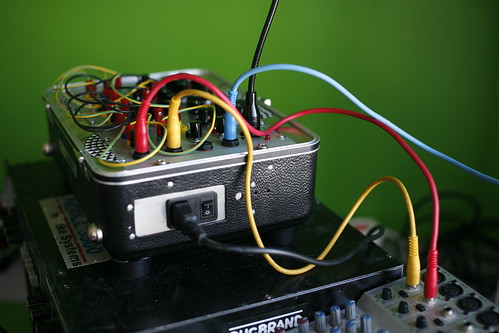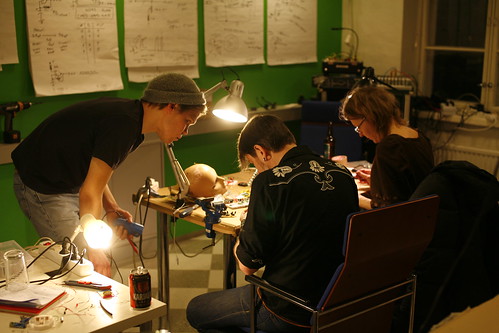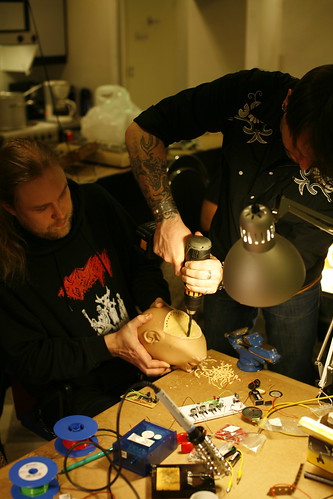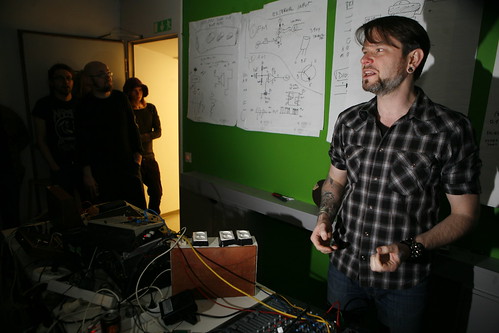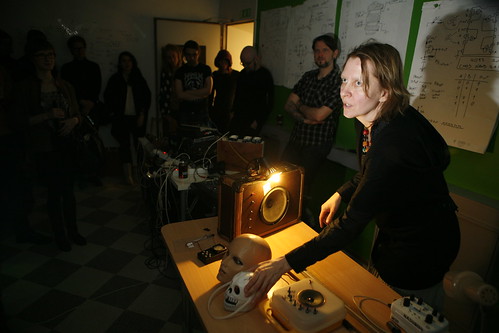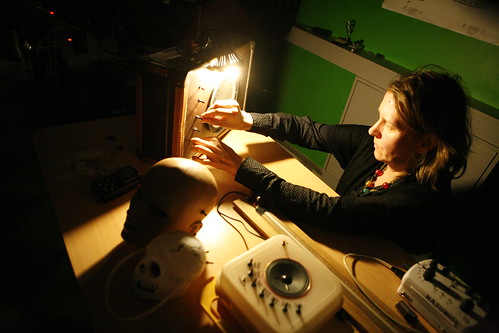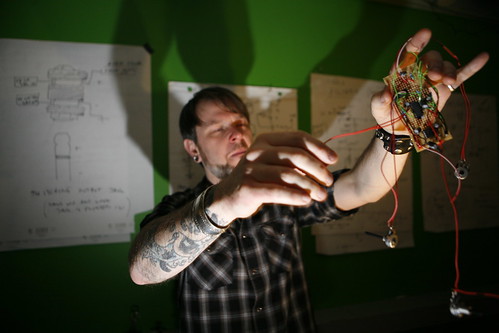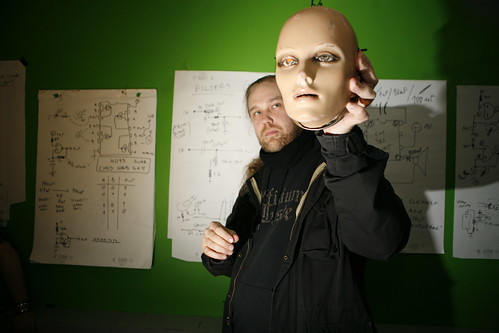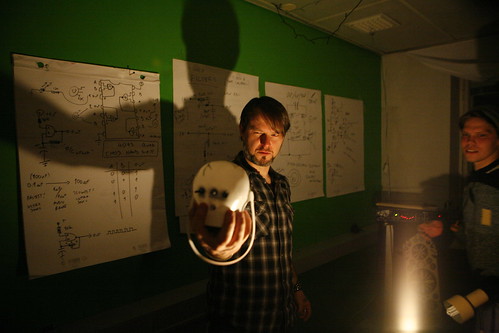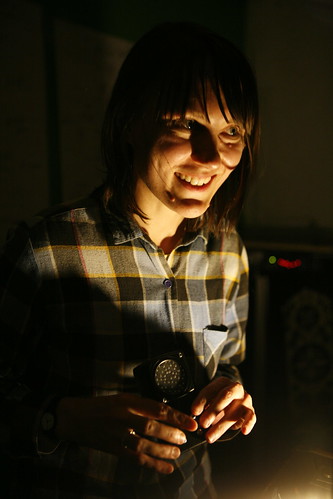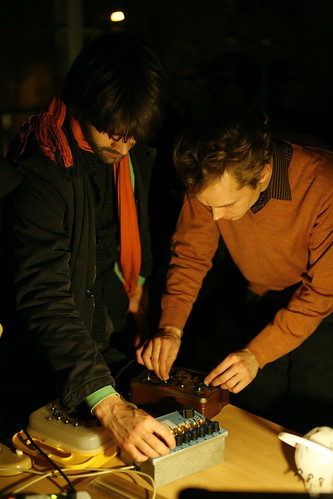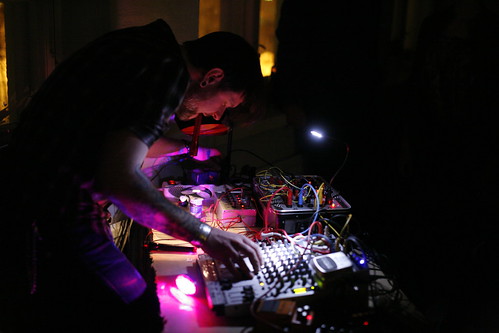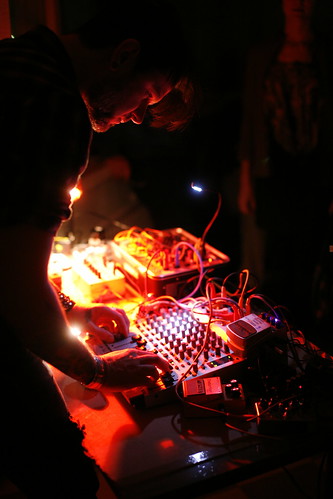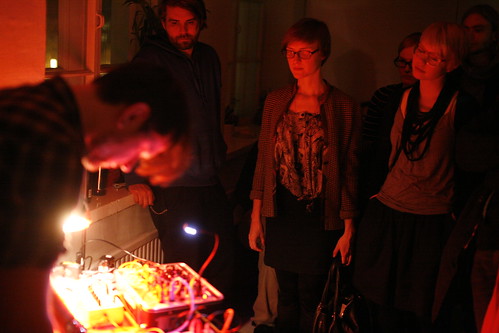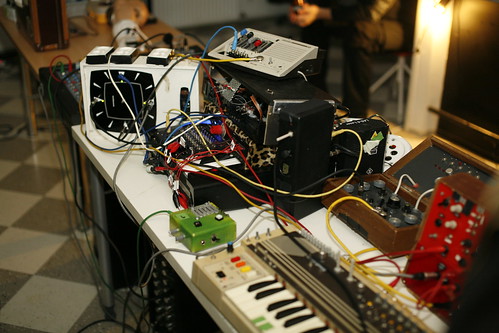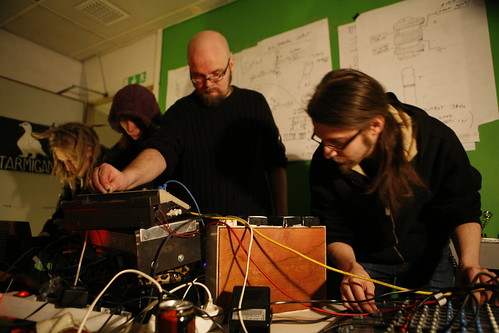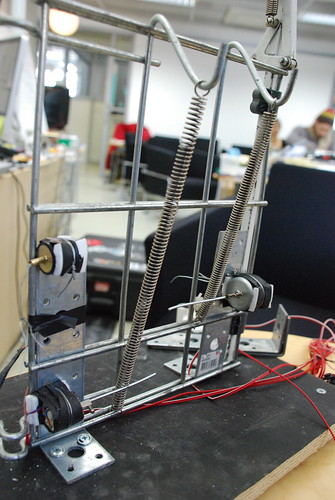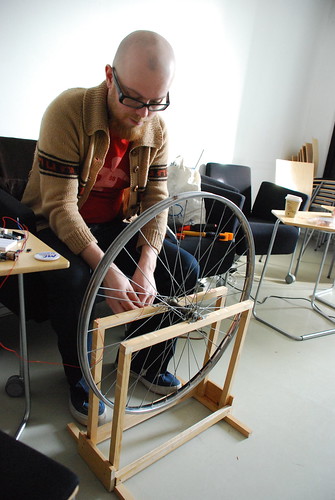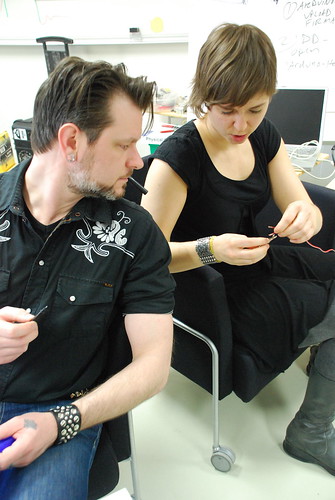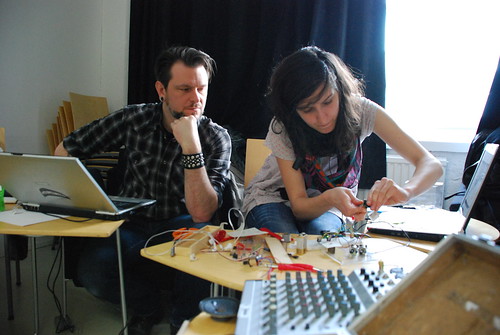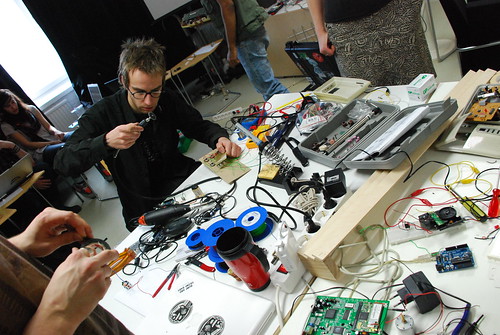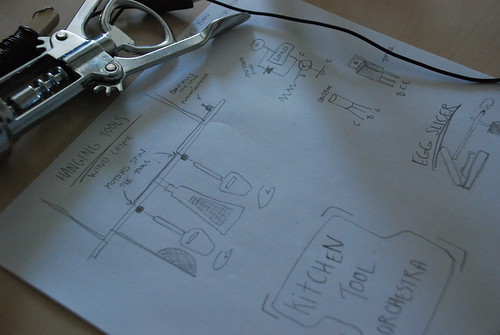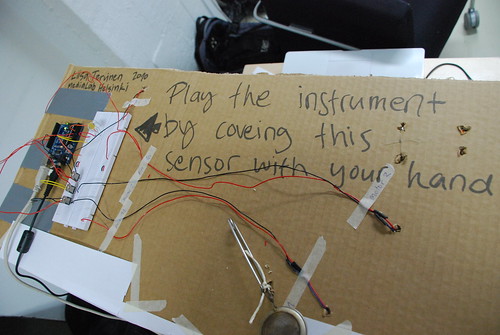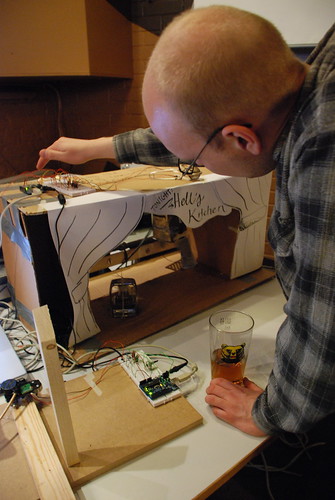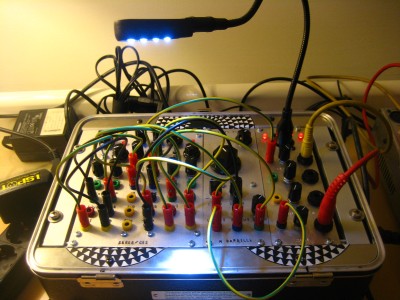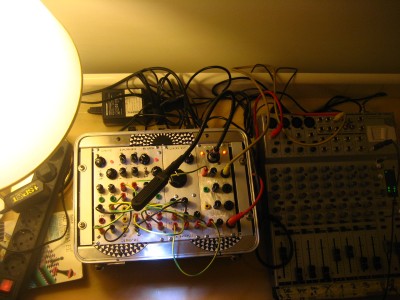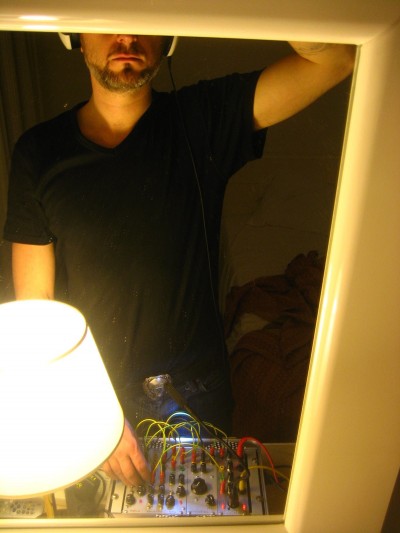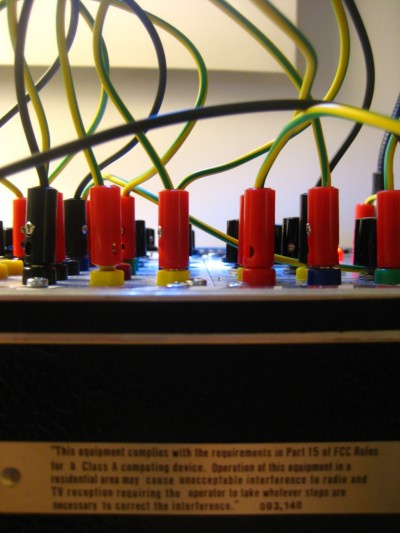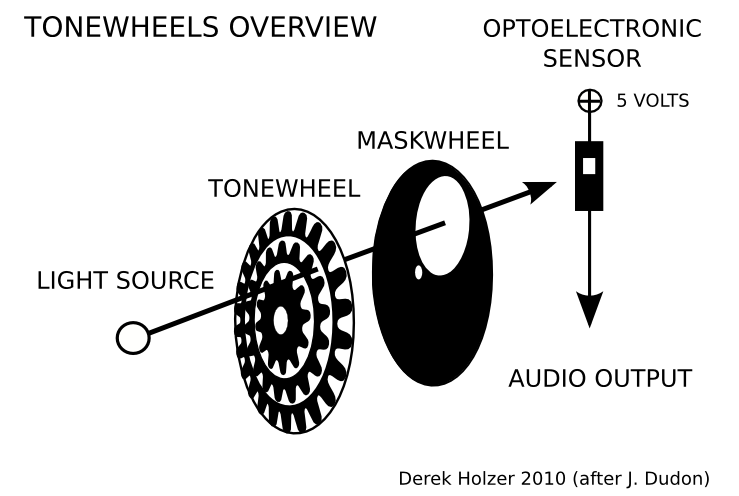
The following is an interview I completed this evening for the Bent Festival in New York City, where I’ve been invited to perform TONEWHEELS and give a workshop over the weekend of 23-25 April 2010.
> *Bent:* /Before you got into electronics, what type of music or art were you into?/
I’ve been involved in electronic, media and net art for the past 10 years, and although I make “electronic music”, I don’t listen to any contemporary dance or pop artists at all. A look through my record collection might turn up electro-acoustic composers from the 1960’s, old African funk 45’s from the 1970s, hair metal from the 1980’s or hardcore from the 1990’s, plus folk music from any number of East European, Middle Eastern or Asian cultures. Just no techno.
Right now, some elements of the noise scene like Daniel Menche or Kevin Drumm remain pretty exciting, as well as more conceptual people like John Wiese or Florian Hecker. On the historical side, composers like Eliane Radigue, Maryanne Amacher, Iannis Xenakis, Bernard Parmegiani and David Tudor have been big inspirations to me. I also listen to shit-load of drone, doom, death and black metal.
It’s good to remind yourself that nothing is really ever new or original, you can find the roots of anything if you look deep enough into the past.
> Bent:* /How did you get into electronics?/
Long ago, in a previous lifetime, I was studying writing in the university. Some things in my life changed dramatically as a result of my first stint living abroad, and when I returned to the States my new path was clear: doing sound, and in a place where there is genuine support for the arts (i.e. Europe)!
Instead of completing my thesis, I attempted to build my first synthesizer from an SN76477 chip, probably liberated from a pinball machine somewhere. It was a failure, and I spent the next several years doing digital audio instead. I finally came back to electronics about four years ago, when I was so sick of laptop “performances” I couldn’t stand it anymore, and soon after began the process of building my own modular synthesizer as well as designing the TONEWHEELS optoelectronic synthesizer.
> Bent:* /Where do you find inspiration for your work?/
The TONEWHEELS project was inspired by some of the pioneering 20th Century electronic music inventions, such as the ANS Synthesizer (Murzin USSR 1937-57), the Variophone (Sholpo USSR 1930) and the Oramics system (Oram UK 1957). With the help of Andrei Smirnov of the Theremin Center in Moscow, I did an incredible amount of research into the history of drawn sound and optical synthesis while I was designing the TONEWHEELS synthesizer. The experiments made with “painted soundtracks” in the Soviet Union during the 1930’s in particular are mind-blowing, and without the work of Mr Smirnov they would be unknown to the rest of the world.
I also spent several days at the Daphne Oram archives at Goldsmiths University in London, reading the letters between her and the engineer who helped her build the Oramics machine. It was fascinating! The same concerns she had, and the same learning process, were the hurdles I had to jump in my own work.
You can see the results of my historical research here:
http://www.umatic.nl/tonewheels_historical.html
> *Bent:* /What is your take on the circuit bending community at large? Where are you in it?/
I’d have to say that I don’t consider myself a “circuit bender” exactly. It’s very rare that I take an existing consumer gadget and try to hack it. My approach tends to be to start with the most basic parts I can understand and work up from there. In the case of the TONEWHEELS project, that part is called a phototransistor, and my first experiment was simply to run 5 volts through it into a mixer channel and start flickering the lights in the room!
This might be where I part company from Reed Ghazala’s “antitheory” approach, which seems to be very popular among benders. For me, the possibilities come not from blindly sticking my fingers in things, but instead from understanding the materials I am working with and their specific properties. That said, I failed every math class I was ever forced to take and still maintain a rather intuitive relationship with those materials, which is hardly the way a “real” engineer might work!
I’ve always maintained that the only thing that separates artists using technology now from the electronic art pioneers of the 1960s and 1970s–such as Steina & Woody Vasulka, Don Buchla, Serge Tcherepnin, Dan Sandin and David Tudor–is the internet. Whereas they had much more limited channels to find the information they needed, we have an almost limitless supply. Which is of course the other half of the problem–trying to get the signal out of the noise.
> *Bent: *Is there anything you want to accomplish while you are in New York?/
Finding a place to stay during the week I’m there is a good start!!!!!
But seriously…I’m negotiating to do a field recording workshop at Harvestworks as well as a couple talks at the Electronic Music Foundation on the history of optoelectronic synthesis and a project related to sound and architecture I’ve been involved in called Tuned City.
Besides that, I’m trying to look up the current locations of some of the old original audio and video synthesizers produced in the 1960’s and 1970’s, so I can see them up close. Every university I’ve been invited to speak at in the US and the UK all seem to have some analog treasure locked up in a closet somewhere!!!!
> Bent:* /Who are you most excited to see at Bent? Why?/
I’m quite excited to meet Eric Archer, from Austin Texas. He is performing as part of Handmade Music Austin. Eric and I have been writing for a year or two now, and his Light2Sound device is totally awesome, a really nice introduction to optical synthesis for beginners. I have a huge amount of respect for Eric and his creations–maybe because I have a suspicion he aced his math classes and actually had an idea what he would do with it later!
Now Playing
daniel higgs–devotional songs of daniel higgs[2009 open mouth cassette]
david tudor–three works for live electronics[1996 lovely]
godflesh–merciless[1994 earache]
jaques dudon–lumieres audibles[1996 mondes harmoniques](Thanks to Jonas Olesen, who pointed Dudon’s work out to me when I had overlooked it all this time…)
julian jaynes–the origin of consciousness in the breakdown of the bicameral mind[1976 book] (Thanks to Professor Anthony Moore of the KHM who reminded me of the longest title on my mother’s bookshelf when I was a child…and to my mother for digging it up for my birthday!)
nik raicevic–the sixth ear[1972]
ruth white–seven trumps from the tarot cards[1969]
steve birchall–reality gates: electronic meditations by steve birchall[2006 creel pone cdr]
various artists(andrzej dobwolski, bob cobbing & annae lockwood, daphne oram, eric nordgren, frederick charles judd, henri chopin, jean-luis brau, john mcclure, various junior & senior high school students, vladimir ussachevsky)–creelpolation 1 – 7″ singles[2006 creel pone] (Creel Pone, I fucking love you!)
yellow swans–being there[2010 type]
